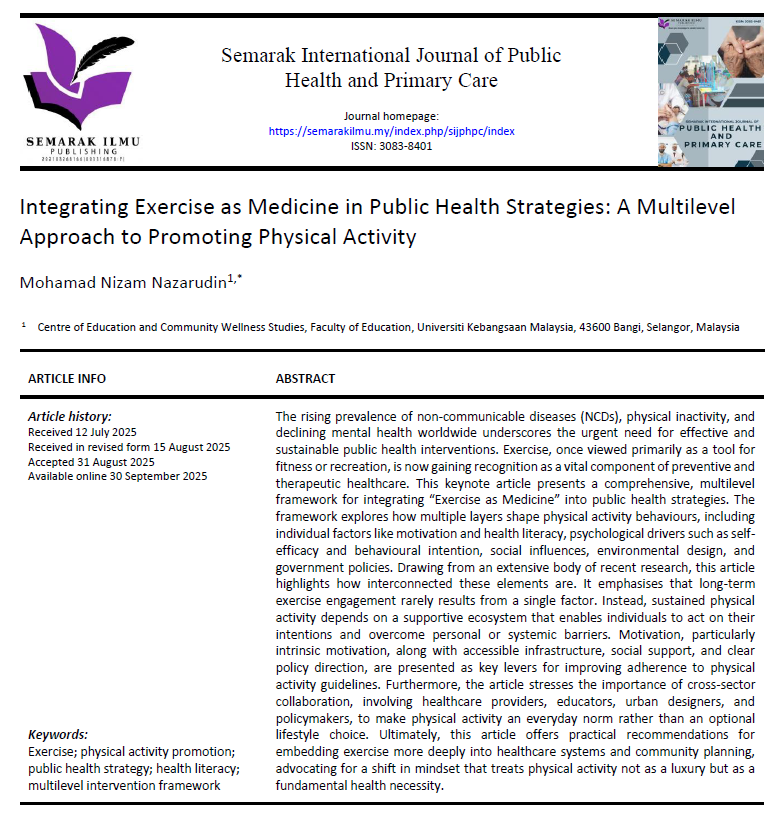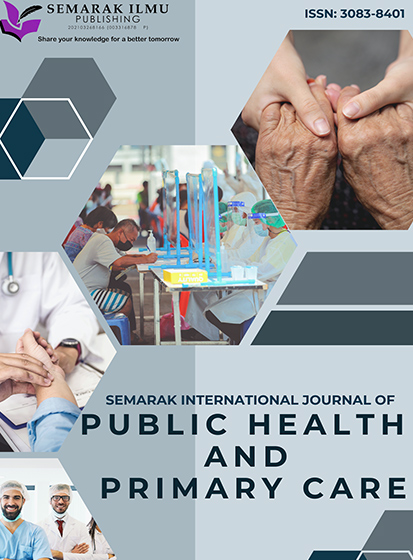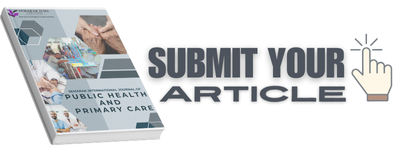Integrating Exercise as Medicine in Public Health Strategies: A Multilevel Approach to Promoting Physical Activity
DOI:
https://doi.org/10.37934/sijphpc.5.1.2130Keywords:
Exercise, physical activity promotion, public health strategy, health literacy, multilevel intervention frameworkAbstract
The rising prevalence of non-communicable diseases (NCDs), physical inactivity, and declining mental health worldwide underscores the urgent need for effective and sustainable public health interventions. Exercise, once viewed primarily as a tool for fitness or recreation, is now gaining recognition as a vital component of preventive and therapeutic healthcare. This keynote article presents a comprehensive, multilevel framework for integrating “Exercise as Medicine” into public health strategies. The framework explores how multiple layers shape physical activity behaviours, including individual factors like motivation and health literacy, psychological drivers such as self-efficacy and behavioural intention, social influences, environmental design, and government policies. Drawing from an extensive body of recent research, this article highlights how interconnected these elements are. It emphasises that long-term exercise engagement rarely results from a single factor. Instead, sustained physical activity depends on a supportive ecosystem that enables individuals to act on their intentions and overcome personal or systemic barriers. Motivation, particularly intrinsic motivation, along with accessible infrastructure, social support, and clear policy direction, are presented as key levers for improving adherence to physical activity guidelines. Furthermore, the article stresses the importance of cross-sector collaboration, involving healthcare providers, educators, urban designers, and policymakers, to make physical activity an everyday norm rather than an optional lifestyle choice. Ultimately, this article offers practical recommendations for embedding exercise more deeply into healthcare systems and community planning, advocating for a shift in mindset that treats physical activity not as a luxury but as a fundamental health necessity.









